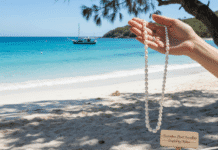In today’s competitive marketplace, effective packaging design is more than just a protective layer; rather, it is an important marketing tool that plays a vital role in influencing consumer buying decisions. Along with the change in consumer preference, packaging design trends have been changing with time due to changes in technology. This article will deal with the latest packaging design trends that can help in increasing visibility for any product, and perceived value, and ultimately contribute to increased sales.
Packaging Design: How Important It Is
Packaging design is the number one priority in customer’s experiences. This is because most consumers interact with packaging more than the actual product, and sometimes it is the first interaction with the product. That said, it is vital for every brand to invest in premium and good-looking packaging. According to research, it has been estimated that as many as 77% of consumers are influenced to purchase by packaging design. Hence, knowing and applying the right packaging design techniques will result directly in improved sales and customer loyalty.
Key Trends in Packaging Design
1. Sustainable Packaging
With environmental concerns at their tipping point, consumer attention is increasingly shifting to sustainability in the products being purchased. Simple, eco-friendly items such as a bar of shampoo have also inspired brands to rethink their packaging, proving that minimal, waste-free designs can still look appealing while reducing environmental impact. Besides meeting the demands of the consumers, brands turn to eco-friendly packaging solutions, through which they gain added advantages in increasing brand image. For this reason, sustainable packaging can be made from recyclable, biodegradable, or reusable materials appealing to eco-conscious consumers. Research has claimed that 74% of consumers would consider paying more for a product with sustainable packaging, hence an important trend for the brand.
2. Minimalist Design
The minimalist trend in packaging design runs up until this day. It is defined by simplicity, clean lines, and a restricted color palette. Minimalist packaging exudes elegance and sophistication that is sure to hook the consumers who fancy modesty in their packaging. The plus side of this minimalist design includes reduced production costs and environmental degradation, hence attaining the call for greener environments.

3. Interactive Packaging
Differentiating customers’ engagement with the packaging from others, interactive packaging engraves more memorable experiences in people’s minds and thus might create brand loyalty. In the framework of this trend come interactive QR codes, AR components, and gamified components which will encourage the consumer to engage in interaction. With supplementary information about the product or, in some cases, entertainment, brands can make an unboxing experience even more pleasurable and hence shareable through social media networks.
4. Bold Colors and Hyper Contrast
Because the marketplace is crowded, differentiation is key. Packaging designed to incorporate bold colors and hyper-contrast may pop and give a real jolt to the visual palette for consumers. This trend is specifically helpful for brands catering to the younger audience and/or those trying to convey energy and excitement. Brands could use bright colors and contrasting elements to set their products apart from the rest on any given store shelf and beg for consumer attention.

5. Transparent Packaging
Transparency in packaging is a growing trend wherein consumers want to know what they are buying. The crystal clear packaging helps the customers understand what is inside, developing trust in the product and decreasing the chances of returns. This trend will increase more for food items and cosmetic products, where looking good is everything. Transparent packaging can also be combined with minimalistic design elements that enable focus on the product’s purity and quality. With blister cards, for example, this transparency is a defining feature since it protects not just the product but also a line of sight that is so important to build trust and aesthetics, especially in conservative industries such as pharmaceuticals and electronics.
6. Retro and Vintage Aesthetics
Nostalgia is one of the most powerful emotional drivers to buy. Retro and vintage packaging designs stir memories from a person’s past, making the product trustworthy and familiar. This will especially appeal to people with emotional connections to earlier times and may be applied to brands targeting an older demographic or those desiring a timeless appeal. Classic design elements and typography will help a brand enhance its authenticity and heritage.
7. Integration of Intelligent Technology
Smart technology integrated into packaging is going to alter how consumers will interact. Using NFC or Near Field Communication and QR codes, brands can provide additional product information, promotional content, and interactive experiences. This development not only engages customers but also delivers priceless data to help brands understand consumer behavior. A brand can integrate smart technology into packaging design to increase customer engagement and set its offering apart in a highly competitive market.
8. Emotional Appeal
One of the best ways to make packaging design effective is to elicit some form of emotion in the people who might purchase the product. Brands can stir up desired emotions in customers by making use of colors, typography, and design elements. Emotional Design may affect purchasing decisions since it tends to appeal to the desires and aspirations of consumers. Packaging that tells a story or delivers a specific brand value can create deeper connections and, thus, may be able to drive further purchases.
Conclusion
Conclusion: Packaging design is a crucial part of product marketing that can be decisive in the saleability of a commodity. If a brand remains abreast of the latest trends, then only will it be able to establish packaging that appeals to consumers and further enriches their experience. Among various tactics that position the brand differently in the crowning marketplace are sustainable practices, minimalistic aesthetics, interaction features, and emotional appeal. The investment in innovative packaging design would be of the essence to the willing investor who intends to increase his sales, build brand loyalty, and remain competitive. As consumers’ preferences continue to change, it will be obligatory for brands to understand the emerging trends in packaging strategy and try to fit into these changing trends to be dominant within the market.





